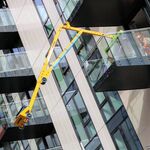Haljackey
Active Member
I love how London is now only building the two most useless BRT legs of the original plan, while the busiest corridors will continue to operate in mixed traffic. Just excellent planning all around.
I mean ya... but at least

-----
The reasons why the south and east legs were approved is that they run on their own new lane- no existing car lanes will be eaten up, and that they provide transit connections to London's industrial lands in the east and south.
The downtown loop was a surprise pass, but at least that sets up the possibility of new routes in the future. Also this funds a lot of infrastructure work below street level that desperately needs to be replaced/upgraded.
Many voters last election were pissed that the councilors they elected pledged to be anti-BRT and yet voted for these routes. There could be some revenge votes this time booting these councilors out... we shall see.






